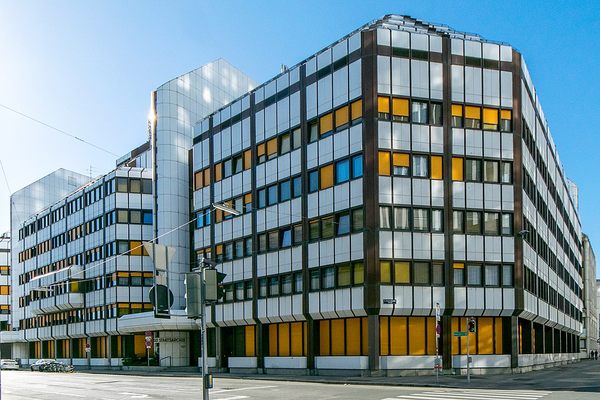Boltzmann's Grave
Physicist’s epitaph provides final confirmation to a career of turmoil.
Zentralfriedhof, Vienna’s largest and most famous cemetery, is the final resting place for many important Europeans. The cemetery has a particularly notable constituency of composers: Beethoven, Brahms, Schoenberg, Schubert, and the Strauss family are all buried there. Perhaps the most intriguing grave site, however, belongs to Ludwig Boltzmann, the Austrian physicist known for his contributions to statistical mechanics and thermodynamics. While his tombstone is surely not the grandest, it is interesting for its simple and unique inscription: S = k log W. Boltzmann spent his life defending this equation of his, but committed suicide before he could see experimental verification of his ideas.
Ludwig Boltzmann was a peculiar man. He was subject to drastic mood swings, causing many of his personal relationships to be ridden with turmoil. Some speculate that the physicist suffered from bipolar disorder, and he himself jested that his fickle temperament must be due to the fact that he was born during the night between Mardi Gras and Ash Wednesday.
No matter the cause for his behavior, Boltzmann faced many difficulties in his career as a result. To make matters worse, most of the physicist’s ideas were highly controversial at the time. Not surprisingly, Boltzmann had many scientific opponents and his work was the subject of frequent criticism within the physics community.
For one, Boltzmann was an outspoken advocate for the atomic theory, which states that matter is composed of discrete units called atoms. All of his theories presupposed the existence of atoms and molecules, but even in the late 1800s many physicists rejected the idea of a fundamental building block of matter. In the minds of the opposition, matter could be divided into any arbitrarily small quantity.
Also at the heart of Boltzmann’s theories was the notion that nature can be described by statistics. His statistical conception of mechanics and thermodynamics provided a framework with which the microscopic and macroscopic worlds could be connected. Boltzmann asserted that the individual properties of atoms and molecules could be used to explain a material’s bulk properties such as heat, energy, and work.
Wilhelm Ostwald, perhaps Boltzmann’s greatest foe, often challenged the statistical basis of the physicist’s ideas. In a particularly heated debate in 1895, Ostwald rejected Boltzmann’s notion that any phenomenon could be explained with suitable equations: “The actual irreversibility of natural phenomena thus proves the existence of processes that cannot be described by mechanical equations, and with this the verdict on scientific materialism is settled.” Although Boltzmann had considerable support in this case, he continued to spend his final years defending his work from continuing attacks.
Depressed and in poor health, Boltzmann hung himself while on a family vacation in 1906. The true motives for his actions are unclear, but his suicide is generally attributed to an underlying mental illness and the lack of acceptance of his work. Only a few years later, Jean Baptiste Perrin’s experimental verification of Brownian motion would settle the century-long debate about the atomic theory and thereby validate Boltzmann’s career.
The formula on his tombstone, S = k log W, is the equation for the entropy of a system of particles. It states that entropy, which can be regarded as a measure of a system’s “disorder,” depends only on a constant number k (now named Boltzmann’s constant) and the number of possible “microstates” W. Microstates essentially describe the configurations of the locations and momenta of particles in a system.
Despite Boltzmann’s troubled career, he will be remembered as one of the most important physicists of his time. Aside from his contributions to statistical mechanics and thermodynamics, he was also one of the first to recognize the importance of James Clerk Maxwell’s electromagnetic theory and arguably anticipated quantum mechanics by suggesting that the energy levels of an atom might be discrete.
Know Before You Go
Visitors can reach the cemetery by trams 71 and 6, bus number 171 and the train (Schnellbahn) S7. There is a parking fee for visitors with cars. Ludwig Boltzmann's burial site is grave 1 in Group 14C, on the right just before you reach the presidential crypt.



























Follow us on Twitter to get the latest on the world's hidden wonders.
Like us on Facebook to get the latest on the world's hidden wonders.
Follow us on Twitter Like us on Facebook